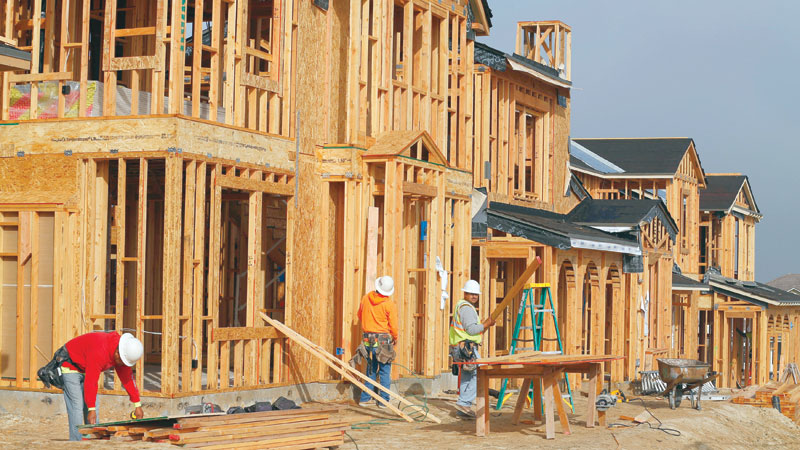

WASHINGTON: The US economy added the biggest number of jobs in more than 1-1/2 years in February, but a slowdown in wage growth pointed to only a gradual increase in inflation this year. Nonfarm payrolls jumped by 313,000 jobs last month, boosted by the largest rise in construction jobs since 2007, the Labour Department said on Friday.
The payrolls gain was the most since July 2016 and triple the roughly 100,000 jobs the economy needs to create each month to keep up with growth in the working-age population. Data for December and January were revised to show the economy creating 54,000 more jobs than previously reported.
The labour market is benefiting from strong domestic demand, an improvement in global growth, and robust US business sentiment following passage of the Trump administration’s $1.5 trillion tax cut package. The tax cuts came into effect in January.
The blowout payrolls number cemented expectations the Federal Reserve will increase interest rates at its March 20-21 policy meeting. Sluggish wage growth, however, left economists divided on whether the US central bank would upgrade its rate forecast for this year to four hikes from three.
“While the employment gains unequivocally suggest underlying strength in the economy, wage gains remain muted enough for the Fed to continue with an only gradual normalization of the policy stance. Stock markets are reacting accordingly,” said Harm Bandholz, chief US economist at UniCredit Bank in New York.
Average hourly earnings edged up four cents, or 0.1 per cent, to $26.75 in February, a slowdown from the 0.3 per cent rise in January. That lowered the year-on-year increase in average hourly earnings to 2.6 per cent from 2.8 per cent in January.
The unemployment rate was unchanged at a 17-year low of 4.1 per cent in February for a fifth straight month as 806,000 people entered the labour force in a sign of confidence in the job market. The average workweek rebounded to 34.5 hours after falling to 34.4 hours in January.
Speculation that the central bank would upgrade its rate projections was stoked by Fed Chairman Jerome Powell when he told lawmakers last week that “my personal outlook for the economy has strengthened since December.”
Although Powell said there was no evidence of the economy overheating, he added “the thing we don’t want to have happen is to get behind the curve.”
Some economists expect the Fed to raise borrowing costs four times this year, arguing that wage growth was actually running stronger than suggested by average hourly earnings, which tend to be volatile on a monthly basis. Average hourly earnings for production and non-supervisory workers, which economists say are better measured, increased 0.3 per cent in February.
“In spite of the modestly softer February figure, for the first two months of the quarter, the headline average hourly earnings number is increasing at a 3.3 per cent annual rate, which would make it the strongest quarter of the expansion,” said Michael Feroli, an economist at JPMorgan in New York.
Economists polled had forecast payrolls rising by 200,000 jobs last month and the unemployment rate falling to 4.0 per cent. Average hourly earnings had been expected to increase 0.2 per cent in February.
Stocks on Wall Street rallied on the tepid wages data, with the Nasdaq Composite index hitting a record high.
US Treasury yields rose as investors focused on the robust payrolls number. The dollar slipped against a basket of currencies.
The employment report suggested the economy remained strong despite weak consumer spending, home sales and industrial production and a wider trade deficit in January that prompted economists to lower their first-quarter growth estimates. — Reuters
Oman Observer is now on the WhatsApp channel. Click here



